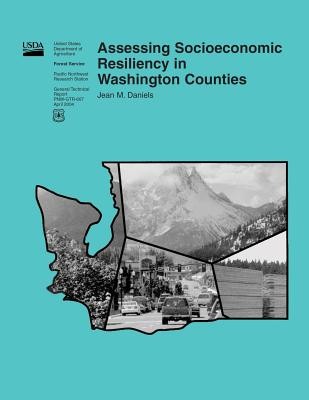
- We will send in 10–14 business days.
- Author: United States Department of Agriculture
- Publisher: CreateSpace Independent Publishing Platform
- Year: 2015
- Pages: 40
- ISBN-10: 1508448531
- ISBN-13: 9781508448532
- Format: 21.6 x 28 x 0.2 cm, softcover
- Language: English
- SAVE -10% with code: EXTRA
Assessing Socioeconomic Resiliency in Washington Counties (e-book) (used book) | bookbook.eu
Reviews
Description
The link between forest management and the well-being of communities in forested areas has traditionally been defined by forest sector employment opportunities. Attempts to redefine this relationship have produced methods that use a more comprehensive approach by combining both economic and social indicators to evaluate community well-being. The goal of this study is to evaluate socioeconomic resilience and forest dependence in Washington counties in order to identify counties where changes in forest management could negatively affect the well-being of nearby residents, allowing land managers and decisionmakers to anticipate the effects of land management policies. Results indicate that Ferry, Pend Oreille, Pacific, Skamania, Stevens, and Wahkiakum Counties all have socioeconomic systems that could be particularly vulnerable to forest management changes. The same analyses were performed for the Washington Department of Natural Resources (DNR) by using only counties on the west side of the Cascade Range. Results show that two counties, Wahkiakum and Pacific, may experience disproportionate negative impacts from changes in DNR state forest management. These findings are preliminary in nature; findings should be reassessed using community-level data to determine the optimum geographic scale necessary for detailed evaluation of policy effects.
EXTRA 10 % discount with code: EXTRA
The promotion ends in 18d.01:11:39
The discount code is valid when purchasing from 10 €. Discounts do not stack.
- Author: United States Department of Agriculture
- Publisher: CreateSpace Independent Publishing Platform
- Year: 2015
- Pages: 40
- ISBN-10: 1508448531
- ISBN-13: 9781508448532
- Format: 21.6 x 28 x 0.2 cm, softcover
- Language: English English
The link between forest management and the well-being of communities in forested areas has traditionally been defined by forest sector employment opportunities. Attempts to redefine this relationship have produced methods that use a more comprehensive approach by combining both economic and social indicators to evaluate community well-being. The goal of this study is to evaluate socioeconomic resilience and forest dependence in Washington counties in order to identify counties where changes in forest management could negatively affect the well-being of nearby residents, allowing land managers and decisionmakers to anticipate the effects of land management policies. Results indicate that Ferry, Pend Oreille, Pacific, Skamania, Stevens, and Wahkiakum Counties all have socioeconomic systems that could be particularly vulnerable to forest management changes. The same analyses were performed for the Washington Department of Natural Resources (DNR) by using only counties on the west side of the Cascade Range. Results show that two counties, Wahkiakum and Pacific, may experience disproportionate negative impacts from changes in DNR state forest management. These findings are preliminary in nature; findings should be reassessed using community-level data to determine the optimum geographic scale necessary for detailed evaluation of policy effects.


Reviews